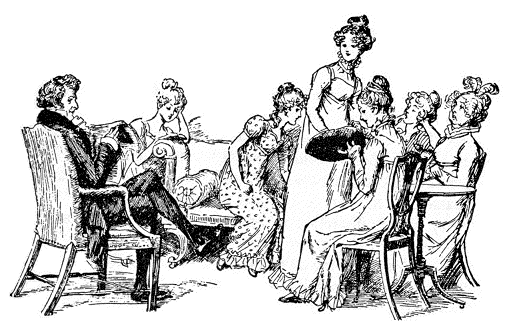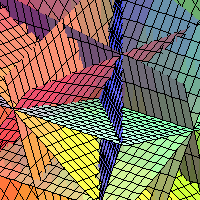The Home Page of Signed, Gain, and Biased Graphs
by Thomas Zaslavsky

Why is this picture appropriate?*
Illustration by Hugh Thomson, courtesy of Henry Churchyard
A Mathematical Bibliography of Signed and Gain Graphs and Allied Areas
Electronic Journal of Combinatorics, Dynamic Surveys in Combinatorics, #DS8.
-
A signed graph is a graph with signs labelling its edges.
A gain graph has elements of any group as edge labels (called "gains"), with the understanding that reversing the sense in which you traverse the edge will invert the gain.
A bidirected graph has both ends of each edge directed independently; it can be regarded as an oriented signed graph.
-
The Bibliography is a classified and copiously annotated list of all the publications (and suitable unpublished manuscripts, theses, etc.) of mathematical interest related to signed graphs, vertex-signed graphs, gain graphs (invertibly group-labelled graphs), and bidirected graphs that I've been able to find and examine and enter into the list. (That is possibly about half of all publications.)
It includes all or part of the literature of signed digraphs, Dowling lattices, combinatorics of root systems,
parity of cycles and paths and max-cut problems as well as signless Laplacian matrices (these concern all-negative signatures),
generalized networks (networks with gains), qualitative matrix theory, quadratic pseudo-Boolean functions, correlation clustering, dynamic labeled 2-structures, etc., etc.,
as well as selected publications on applications to social science (psychology, sociology, anthropology, economics) and natural science (physics, chemistry, biology—sorry, no geology
or astronomy—yet).
-
The Bibliography is published as Dynamic Survey 8 in the Dynamic Surveys in Combinatorics of the Electronic
Journal of Combinatorics. The published editions are also available here (see below) in PDF. If you want PS or the Tex file, see the Dynamic Surveys Web page.
- Sixth(a) Edition (PDF, 625 KB), 1998 July 20. vi + 124 pp.
Copyright ©1996–1999 Thomas Zaslavsky.
- Seventh Edition (PDF, 750 KB), 1999 September 22. vi + 151 pp.
Copyright ©1996–1999 Thomas Zaslavsky.
- Eighth Edition (PDF, 1.5 MB), 2012 Sept 6. vi + 340 pp.
Copyright ©1996–2012 Thomas Zaslavsky.
- Ninth Edition (PDF, 2.8 MB) 2018 August, newly with internal and external hyperlinks. vi + 518 pp.
Copyright ©1996–2018 Thomas Zaslavsky.
- Preliminary Tenth Edition as of 2024 Feb 6. ix + 662 pp., in
PDF (3.5 MB), or the LaTeX file (2.5 MB) with searchable topic codes.
Copyright ©1996–2024 Thomas Zaslavsky.
Topical subsets
These are (very outdated) specialized sub-bibliographies for selected subtopics. Each has its preparation date on the title page.
Glossary of Signed and Gain Graphs and Allied Areas.
Second Edition, 1998 September 16. 43 pp.
Copyright © 1998 Thomas Zaslavsky
The Glossary has terminology, definitions, and notation; it is a companion to the Bibliography.
The second edition is published as Dynamic Survey 9 in the Dynamic Surveys in Combinatorics of the
Electronic Journal of Combinatorics.
The working version, which is slightly more up to date, is available here. View the second edition in HTML (98 kilobytes), or download either
... a topically arranged version in dvi (124 kB) or PostScript (488 kB) or
... an incomplete alphabetical version in dvi (?? kB) or PostScript (?? kB).
A miscellany of research problems in PostScript or (smaller) in HTML. At present, tiny (especially the HTML version). PS version
is to be expanded.
Links
The Matroids page of Steve Pagano: painlessly learn what a matroid is and what it has to do with signed graphs.
The hyperplane arrangement that represents
the frame matroid of ±K3o, the complete signed graph of order 3;
also known as the hyperplane arrangement corresponding to the root system B3

* Answer to the caption at head of page: We see one family, in the same room but hardly together. The family of signed, gain, and biased graphs is a lot like that. The Bibliography and Glossary are supposed to lead the family members to talk to one another. May they do so! (If you want to know more about the picture, click on it.)
Best Viewed With Any Browser
Home page. E-mail: zaslav@math.binghamton.edu


